Faithful Companions:
Exceptional Dogs
Through their loyalty, prodigious learning ability, and genetic malleability, domestic dogs - originally one subspecies of the grey wolf, canis lupus - have successfully established themselves as humans’ most faithful servants. Many animal legends concern dogs, the natural companions of warriors and adventurers.
 |
Homer’s Odyssey translated by Alexander Pope, with engravings by Thomas Piroli from the compositions of John Flaxman, sculptor. Rome, 1793. [zoom] Ulysses’ hunting dog was named Argos (”Quick”). He waited for his master’s return to Ithaca for nineteen years, and was the first to recognize him, even though Ulysses was disguised as a beggar to fool the suitors who had taken advantage of his long absence. Argos had just enough strength to drop his ears and wag his tail, and then he died. The fierce warrior dashed a tear from his eyes, and said: ”What a noble hound!” According to Erwin Panofsky, Flaxman’s neo-classical designs, infused with sentiment, “often verge on the smooth prettiness of Wedgwood” (he actually directed the ceramics factory in Rome); but they also reflect a very “modern” (i.e., Romantic) form of pathos. His seventy drawings of the Iliad and the Odyssey aroused such enthusiasm among the English colony at Rome that they were turned into etchings, and then into this book. |
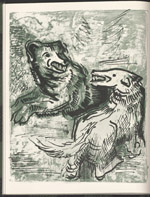 |
Jack London. The Call of the Wild. New York: Heritage Club, 1960. [zoom] | Additional images: 
Jack London’s masterpiece (1903) concerns a Scotch shepherd and St. Bernard mix named Buck, used as a fight dog, and then as a sled dog during the Klondike Gold Rush. When the only man who had ever tamed and loved him is killed by Indians, Buck avenges him, and then follows the wolves into the forest. The story first appeared as a serial in the Saturday Evening Post, where future designer and muralist Henry Varnum Poor read it with passionate interest when he was 15. A half-century later, he contributed 14 drawings for this collector’s edition. |
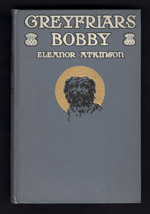 |
Eleanor Atkinson. Greyfriars Bobby. New York: Harper Brothers, 1912. [zoom] |
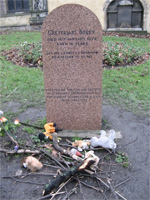 |
Bobby’s Grave with Offerings from Fans in Edinburgh, 2010. [zoom] Photograph courtesy of Georgi Coventry. Bobby was a terrier who reportedly spent fourteen years guarding the grave of his master, a night-watchman for the Edinburgh City Police, until his own death in 1872. A year later, a rich heiress in England, who was involved with the Royal Society for the Prevention of Cruelty to Animals, funded a statue in his honor. The dog’s grave is still a popular destination today. Bobby’s story inspired Eleanor Atkinson, a journalist for the Chicago Tribune. Her schmaltzy novel came out in 1912, and the cover reproduced the Edinburgh monument to Bobby. |
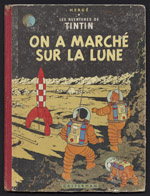 |
Hergé. On a marché sur la lune [Destination Moon]. Tournai: Casterman, 1954. [zoom] The loyal white fox terrier Milou, known as “Snowy” in the Anglophone world, and his master, a young Belgian reporter involved in perilous cases, are truly inseparable. When Tintin and Captain Haddock embark on a lunar expedition in 1954, Milou becomes “the first dog on the moon” - fifteen years before the actual Apollo XI moon landing! Snowy will be computer-generated for Steven Spielberg’s forthcoming movie The Adventures of Tintin: Secret of the Unicorn (2011). |
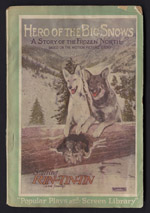 |
Hero of the Big Snow. 1926. [zoom] |
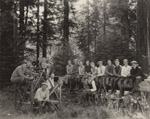 |
Movie Crew for Thunder the Dog. Photograph. 1926. [zoom] The period 1920-1960 saw the triumph of canine movie stars, especially Rin Tin Tin (1918-1932), often credited for saving the Warner Brothers Studios from bankruptcy, but also his rivals Ace the Wonder Dog, Ranger, Flash, and Thunder. Thunder’s biggest hit was The Phantom of the Forest, a gripping adventure set in the mighty Redwoods of California (1926.) Here one can see the movie crew, including the German shepherd dog, and the chief cameraman, Ithaca-born Ray June. |